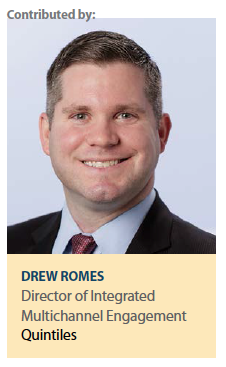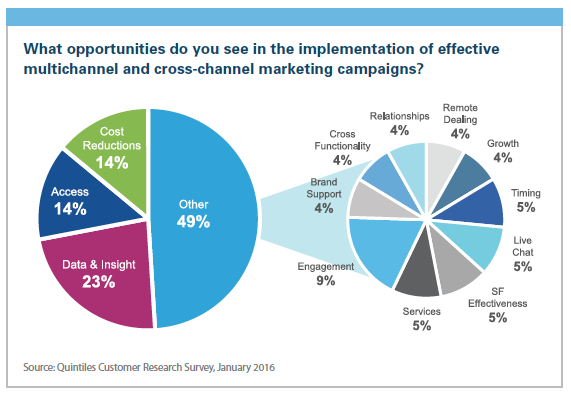 Since the 1990s, family doctors and specialists have evolved into “primary care or specialty providers," with practices now viewed as bottom-line businesses. Individual practitioners have become an anomaly as more physicians sell their practices to healthcare institutions or merge together to form larger groups. In fact, The Physician Foundation reports that only 17% of physicians had a solo practice in 2014.1
Since the 1990s, family doctors and specialists have evolved into “primary care or specialty providers," with practices now viewed as bottom-line businesses. Individual practitioners have become an anomaly as more physicians sell their practices to healthcare institutions or merge together to form larger groups. In fact, The Physician Foundation reports that only 17% of physicians had a solo practice in 2014.1
This institutionalization of the medical practice has many ramifications on the patient, further compounded by the fact that physicians often now find their hands tied in prescribing a course of treatment and medications for their patients. The physician’s autonomy to write a script for a particular brand that he or she thinks will serve the patient best is dwindling. Instead, payers and group practices dictate the medications to be prescribed when treating a condition. This poses a significant challenge to commercial operations throughout the life-sciences industry, and is further complicated by the complexity of influencers and explosion of technologies.
Undoubtedly, influencing physicians on brand options has become a very complex endeavor that the leading life-sciences companies are feverishly trying to master even as the challenge grows. Both sales reps and marketers must find new, cost-efficient ways to engage healthcare professionals plus key opinion leaders, hospital administrators, pharmacists, payers, and regulators.
 The banding together of physicians in the form of Integrated Health Systems creates another messy tangle of interconnections to unravel. How does one effectively reach physicians who are no longer the only decision-maker for therapeutic decisions?
The banding together of physicians in the form of Integrated Health Systems creates another messy tangle of interconnections to unravel. How does one effectively reach physicians who are no longer the only decision-maker for therapeutic decisions?
Fortunately, commercial teams are making major changes. Here are the three most important moves, which one by one are loosening the ties that bind the industry and inching life-sciences companies closer to customer-focused engagement and overall patient well-being.
Move from Cost-Focused to Customer-Focused
Inherent to a multichannel strategy is replacing our focus on costs to a focus on customers. Some life-sciences companies still consider a multichannel approach as an efficient way to fill in communication gaps with remote physicians or those unwilling to meet with sales reps. Worse still, they use multichannel strategies as a means to reduce the total cost of face-to-face interactions rather than to understand and deliver what customers want to hear, when, and how.
One of the problems with this mindset is that not all physicians want the level of personal attention that the life sciences company wants based on their sales prioritization. In fact, these physicians may actually prefer more digital interactions, which costs companies much less and improves the relationship — a win-win. The key to effective multichannel campaigns, therefore, is not cost but rather customer.
 What does the customer prefer?
What does the customer prefer?
Find out, and then leverage a combination of live, personal, and non-personal channels to give the customer what he or she wants. After all, this is what customers have come to expect in a world largely driven by consumer analytics.
One way to make this move is to integrate customer preference data into your commercial operation. Most crucially, however, is for preference data to be sourced from all available channels, integrated into one single source and be continuously updated. Data will likely come from sales team’s recording attributes and responses in their CRMs, customer interactions with email campaigns or web interfaces, and prescription performance data from third-party sources. Over time, the team will learn the relative impact each channel and seeing all of this data aggregated from different sources is key to meaningful statistical analyses and guiding subsequent customer interactions.
Move from Channel Management to Channel Integration
The integration of data from multiple sources is paramount to understanding customer preferences. Likewise, integrating actual channel promotional efforts — both personal and non-personal — is key to meeting those preferences with a consistent message, creating a synergistic effect that has much greater impact than any one channel communication effort has if delivered alone.
Planned integration is also critical to avoiding customer burnout from bombarding a physician with messaging from several channels — all at the same time. Physicians have very limited time with which to deal with and absorb messaging, so we need to heed this through careful planning and delivery of consistent content meaningful to each target. A particular outreach plan may call for email, call center and live rep outreach. It is important to know when each of these channel programs will be implemented, so no one steps on the other’s toes.
Equally important is knowing the reaction to each channel so that adjustments can be made midstream, ensuring that the physician is getting messaging that is timely and builds on prior outreach. For instance, field reps need to see customer reactions to a call center or email promotion so they can follow up appropriately. A physician may have shown interest in a new indication for a particular product, and the rep can provide product overviews in the next live visit, with connections to medical science liaisons who are able to dive into scientific and clinical detail. Knowledge ensures reps do not get caught reiterating old messaging that loses the physician’s interest and makes it less likely to have future successful details.
The collection and collation of data on each customer interaction, available in real time, is imperative to successful multichannel engagement. Where possible, insight can inform when the next connections should be attempted and which channel would be the most suitable. The goal is to provide the right content, with the right frequency, through the desired channel at all times.
Such intercommunication requires that the technology platforms supporting each channel talk to one another to enable dynamic mixing and re-allocation of promotional channels. With the industry still working on breaking down its siloes, this is easier said than done. However, leveraging commercial systems that interoperate and link channels together, can help companies make giant leaps toward multichannel success without having to invest the resources to develop their own infrastructure. Once the technology platforms are in place, it is important then to Integrated Multichannel Engagement platform to dynamically re-allocate channels according to preference.
Move from Analytics as an Output to Analytics as an Enabler for Engagement
It has been customary in the life-sciences industry to use script data to profile physicians in terms of decile and brand positioning and to report on the overall success of a particular sales effort. This type and use of data doesn’t go far enough to demonstrate where we can better foster customer engagement.
Rather we need to collect and analyze other types of data — claims, outcomes, and preference datasets — and we need to do this in real time through a single platform where all data and channels can be aligned to give us the insights needed to drive meaningful engagement.
A tall order, but we can do so by putting feedback mechanisms in place to capture customer response across all channels. To be truly effective, this data collection and analysis should be done on a continual basis rather than the bi-annual analyses currently in place for most companies. Such dynamic interfaces give us the ability to quickly identify any territory trends in order to react as things are shifting – not afterwards. Such data can be very helpful in driving meaningful outreach throughout contingent areas. Ideally, we can even get to a place where we can capture reactions to messages delivered in any interaction and use the successful ones in subsequent outreach with other customers.
Emphasis here needs to be on real time — real-time data collection, analysis, and response. Every channel interaction needs to be recorded as it occurs so that subsequent interactions can be aligned and based on the noted preferences. Sales reps, and even medical science liaisons, need to be prepared for live interactions with dynamic and up-to-date visualizations of historical interaction and response information so they better understand their physicians’ needs in servicing their patient population.
Integrate to Unleash Better Outcomes
Multichannel is no longer an industry buzz word, rather, it’s a methodology for success amidst a tangled marketplace. Like the links of a chain, an integrated multichannel strategy connects channels, content, and customers in a straight line aimed directly at helping patients.
The industry has moved reluctantly beyond face-to-face meetings as its only customer interface, and now looks to other channels to deliver its message.
Virtual rep calls via the Internet, e-details delivering requested content or promotional compliant materials such as coupons and vouchers, visits to web sites, or conferences are just some of the viable and effective touchpoints. By making a few critical changes, life-sciences companies can intelligently leverage multiple channels to optimize engagement by reflecting customer preferences.
Shifting from multichannel marketing’s historical focus on percriptions to that of better understanding its customers, integrating its technology platforms and outreach, and using data to drive engagement will go far to loosen the ties that currently curtail the industry from reaching its potential. (PV)
Editor’s Notes:
1. The Physician Foundation, “2014 Survey of American’s Physicians," pg. 8.
Quintiles (NYSE: Q) helps biopharma and other healthcare companies improve their probability of success by connecting insights from our deep scientific, therapeutic and analytics expertise with superior delivery for better outcomes. From advisory through operations, Quintiles is the world’s largest provider of product development and integrated healthcare services, including commercial and observational solutions. Conducting operations in approximately 100 countries, Quintiles is a member of the Fortune 500 and has been named to Fortune’s list of the “World’s Most Admired Companies."
For more information, visit quintiles.com.


















